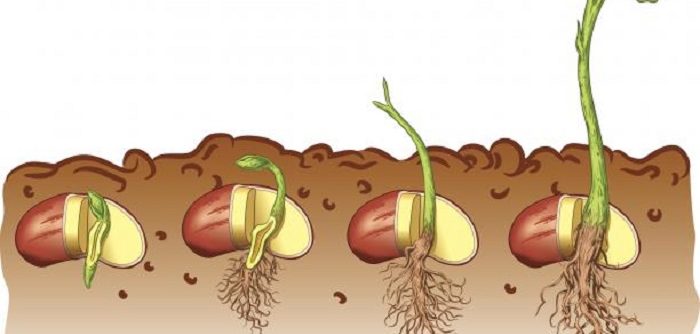Plants are photosynthetic living beings which are capable of producing their own food. They do not possess locomotive capacity. In addition, their cell walls are composed mostly of cellulose. In this article, we show 4 stages of plant growth.
The life cycle of the plants is of great interest since they are complex living organisms that are around us and that normally we do not think how they come to be developed. Unlike the school, this is a topic that is usually seen in biological sciences. However, if you still do not know how your life stages are, in this post you will find the most detailed information. Keep reading: IDEAS FOR AN INDOOR GARDEN AT HOME
Plants are of great importance for the environment, but also for other living beings such as humans. These not only provide food and purify the air but are also used in factories (wood, paper, among others) and in the creation of drugs.
4 stages of plant growth

It is considered that its life cycle is of the haplodiplonte type and has four stages, each one differentiated by its own characteristics and functions. In the same way that it would be for another organism like a man. The plants go through their birth, development, reproduction, and death. Once it has been reproduced, the way in which the seeds are dispersed can vary. Here are the 4 stages of plant growth.
#1 Seed of the plant
Plants that reproduce sexually begin their cycle with a seed, where it can germinate and grow if the conditions are the propitious a reason according to each type of plant, there will be different ways of germinating them. These seeds contain the embryo of the plant.
If you want to make an experiment with lentils, beans, haricot or the plant you want, the best way to do it is to look for a transparent container, in which you must place a paper or cotton that is moist and seeds. The idea is to keep the cotton or paper moisture and see how this cycle goes.
#2 Germination
Once the seed is in a place where conditions are necessary for its birth, the germination phase begins. These basic elements are light, water and heat, where each plant is different but for the experiment, it will suffice as indicated above.
A few days later, a first radical of the seed will emerge, which will grow and grow, taking on an aspect similar to a common root. In addition, the outer layer of the seed will come off.
In the case of being a dicotyledonous seed, the outer layer softens to absorb moisture and once planted, it is divided. The monocotyledons are not divided but are maintained during the development of the plant.
#3 Seedling
Once the plant begins to grow, its youngest state is called “seedling”, where the cotyledons (primordial leaves) will be open and the plumule will develop, which will allow the growth of its first leaves.
#4 Increase
The next step of the experiment is to extract it from the container and pass it to the earth, since the cotyledons have finally fallen and the plant needs to continue growing; since they spend their whole lives growing, which is why they should be cut from time to time, depending on the type.
At this stage of the life cycle of the plants, they need to start generating their food in order to continue growing, a process that is called photosynthesis and that the ability to do so is acquired once the first leaves are visible.
It is known as photosynthesis to the chemical process by which plants have the ability to transform inorganic matter into organic, thanks to the energy coming from sunlight. This is thanks to the chlorophyll (a green pigment that the leaves and stems have).
As the plant grows upwards, the roots continue to fall, as they need to penetrate deeper into the soil to absorb the nutrients and water found in it.

How to reproduce the plant?
Plants can reproduce sexually and asexually. This means that depending on the type of plant. There will be a different reproduction process. Plants born from seeds reproduce sexually. The asexual ones are by stolons emitted by the mother plant.
Those of sexual reproduction reproduce through the flower since this one possesses both genders, which allows the interaction between the pollen and the ovary. The goal is for the first to reach the second, something that is achieved through the birds responsible for pollinating the flowers, where they are attracted by the smell and color produced by the same pollen.
When the ovules are fertilized, they become seeds that in one way or another reach the soil or the earth (usually by animals, the wind or humans) and if they find the right conditions, they begin to germinate and with it, the cycle would be repeated again.
However, asexual reproduction should also be emphasized. This type follows a process to reproduce itself different from the other life cycle of the plants. These manage to grow thanks to the stolons that the mother emits since the daughters are born in the tip of these. Later, the roots manage to penetrate the ground and begin to develop independently.
This has been the 4 stages of plant growth. They vary in their reproduction. The other phases are similar. They are considered living beings because they have a function before dying since they are born, nourish and grow, reproduce and subsequently die, each in a different period.
Tags: plant life cycle, plants




Leave a Reply
You must be logged in to post a comment.